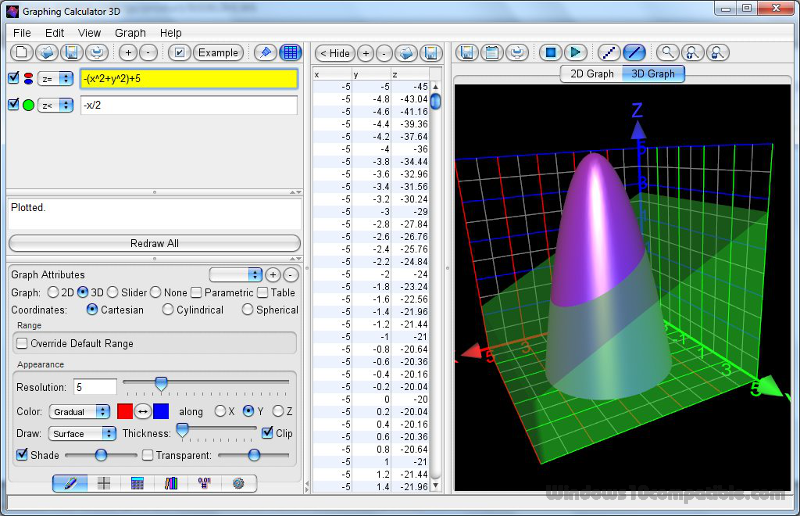

The natural log button is among the first group of buttons that show, but if you want to graph ‘e’ functions, you will get access to it by pressing the ‘2 nd’ button, which opens the second group of available buttons on the calculator. You can also plot graphs for trigonometric equations (equations that use sine, cosine, and tan, etc.), establish graphs for linear and quadratic inequalities, and even plot graphs for various kinds of functions like modulus, absolute values, and the greatest integer function.Īmong the maze of buttons that are used to input numbers and variables is also Euler’s number ‘e’ and also the natural log (ln) function, so you can make graphs for exponential and logarithmic equations too. Mathematics on this graph isn’t limited to algebraic expressions. The last one is to discard an equation from the graph. You can also change the color of the equation using this option. In cases where you want to compare two equations, you might want one to them to be a striped or dotted line/curve. The second option allows you to customize how an equation is depicted on the graph.
Simple graphing program for windows how to#
Read: How to use Windows Calculator to perform Date Calculations. Next to each equation are three options the first one, Analyze, gives you the characteristic properties of the expressions, like their maxima, minima, domain, inflection points, etc. All the equations are color-coded, so it is easy to distinguish them from one another.

This calculator allows you to plot multiple equations on a single graph, which can help in linear programming. The option to input an equation is at the top-right corner of the calculator window.Īs you can see from the picture above, you can compute both linear and quadratic equations in the calculator. You will then see a two-dimensional plotting surface where you can input equations and find out what their resultant graphs look like. Click on the menu from the top-left corner of the screen and select ‘ Graphing.’ By default, you will first view the standard calculator used for math problems we face in our daily life. To open the calculator, you simply have to search for the word ‘ Calculator’ in the start menu search box and open the first app that shows up. How to use Graphing Calculator in Windows 11/10 A Graphing feature, which initially was enrolled in an insider preview and later became generally available for all, provides a clean and interactive experience to allow people to visualize equations and help them learn more about subjects like linear Algebra. They have done a similar thing with their built-in Calculator. Be it in the form of updates to debug various errors or enrolling new features, they are always looking to improve and design their product to meet the needs of their customers better.

Microsoft has always thrived to kick up a notch the Windows features it offers. However, on the whole, this is an elegant and well-designed tool for computer users who need to turn abstract equations or data points into their graphical equivalents.In this article, we will demonstrate how to use the graphing feature in the Windows calculator to try and make mathematics more fun. We would like to see the addition of three-dimensional graph support, which would be useful for displaying complex functions. From a cosmetic point of view, users can freely adjust axes, figure width and color, and shading.

The program can calculate the length or area of a selected function, or determine its first and second derivatives. Users can add relations and set constraints. Tangents, normals, and derivatives can be drawn. It includes a huge number of predefined functions, but new ones can be added. Standard, parameter, and polar functions are supported. Within these limits, it offers most of the features any mathematically minded computer user could ask for. A potentially invaluable tool for math students or engineers, Graph is a tightly focused Windows program that draws and analyzes two dimensional graphs, offering most of the features any mathematically-minded computer user could ask for.


 0 kommentar(er)
0 kommentar(er)
